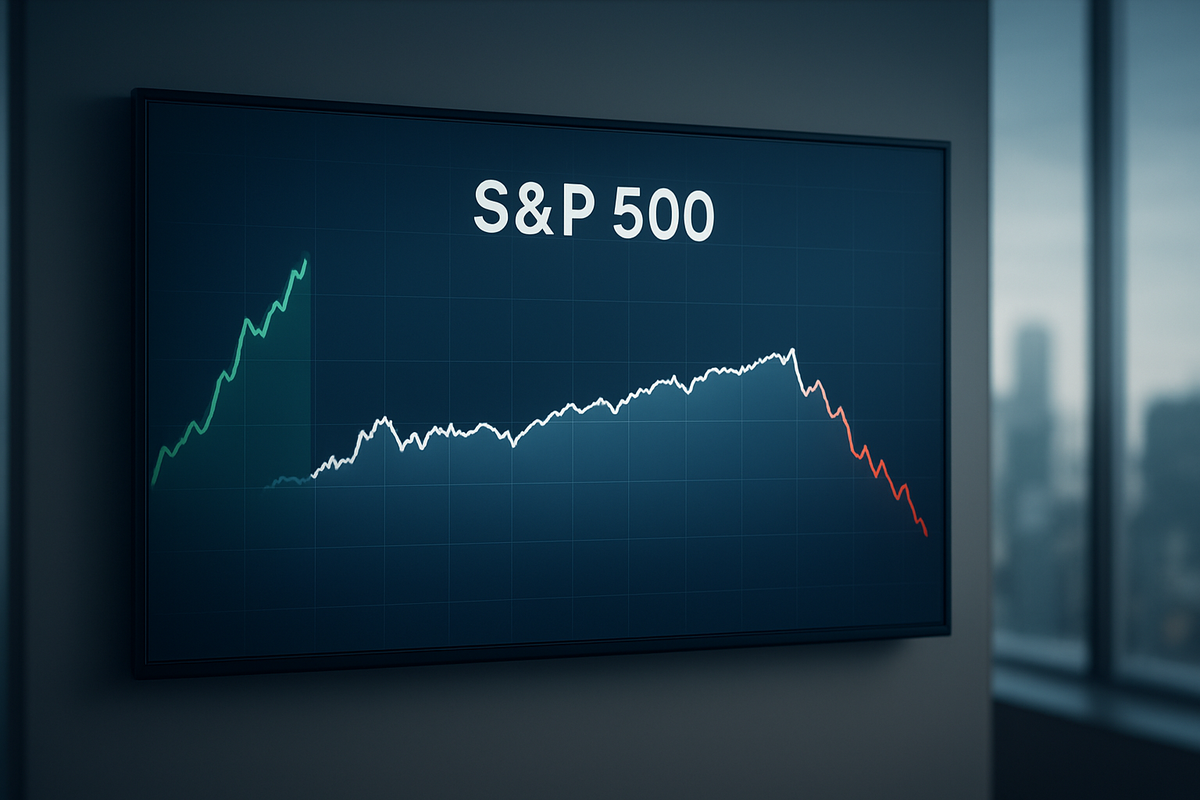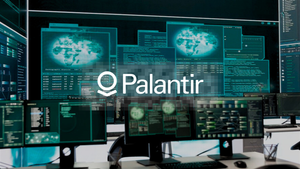
New York, NY – November 12, 2025 – The S&P 500 index closed virtually unchanged today, a notable divergence from the more pronounced movements seen in other major U.S. indices. While the Dow Jones Industrial Average surged to a new record high and the Nasdaq Composite experienced a decline, the broad market benchmark remained largely flat, reflecting a complex interplay of sector rotation and mixed investor sentiment. This equilibrium, rather than indicating market inertia, suggests a period of consolidation, hinting at underlying resilience even amidst significant economic and policy uncertainties.
The immediate implication of the S&P 500's flat performance is a heightened sense of caution among investors, coupled with increased scrutiny of valuations, particularly within high-growth sectors. It underscores the growing importance of diversification in portfolios as market leadership appears to be broadening beyond the "Magnificent Seven" technology giants. With an ongoing U.S. government shutdown delaying crucial economic data, market participants are left awaiting clearer signals regarding the nation's economic health and the future trajectory of monetary policy.
Divergent Paths: Unpacking the S&P 500's Stagnation
Today's flat close for the S&P 500 was not a result of inactivity but rather a delicate balancing act of conflicting forces within the market. Gains in some sectors effectively offset declines in others, preventing a significant net movement for the broader index. Specifically, robust performances in sectors such as healthcare and energy contributed to the Dow's ascent, with key players like UnitedHealth (NYSE: UNH), Goldman Sachs (NYSE: GS), and IBM (NYSE: IBM) showing strength.
Conversely, a notable pullback in several major technology and AI-related stocks weighed heavily on the Nasdaq Composite. Companies like Amazon (NASDAQ: AMZN), Tesla (NASDAQ: TSLA), and Palantir (NYSE: PLTR) experienced declines, reflecting a growing skepticism among investors regarding their high valuations and the sustainability of their rapid growth. While Advanced Micro Devices (NASDAQ: AMD) rallied on optimistic forecasts for its AI data center revenue, this individual strength was insufficient to counter broader tech sector weakness, including a dip for Nvidia (NASDAQ: NVDA), within the S&P 500.
Adding to the market's indecision was the ongoing U.S. government shutdown, which has cast a shadow of uncertainty over the economic landscape. The delay in releasing vital economic data, such as the monthly jobs report, has left both the Federal Reserve and investors with an incomplete picture of the economy's true health. This "data blackout" complicates the assessment of inflation trends and the potential path for interest rates, contributing to a wait-and-see approach from many market participants.
Despite hopes for an imminent resolution to the shutdown, the lack of clarity on economic fundamentals, combined with mixed signals on inflation and interest rate expectations from Fed Chair Jerome Powell, fostered an environment of cautious trading. Traders were hopeful for a December interest rate cut, but Powell's statements tempered these expectations, creating a push-pull dynamic that ultimately led to the S&P 500's static close.
Navigating the Shifting Tides: Winners and Losers
In a market characterized by such internal crosscurrents, the landscape for individual companies becomes increasingly nuanced. The S&P 500's flat performance today underscores a potential shift in investor preference, moving away from purely growth-driven narratives towards sectors offering more stability or perceived value.
Companies within the healthcare sector, exemplified by UnitedHealth (NYSE: UNH), and financial giants like Goldman Sachs (NYSE: GS), which contributed significantly to the Dow's record high, could emerge as relative winners in this environment. These established firms, often seen as more defensive plays, may attract capital seeking refuge from the volatility in high-growth technology stocks. Similarly, energy companies, benefiting from stable commodity prices or geopolitical factors, also demonstrated resilience, suggesting a broader base of market leadership is developing.
On the other hand, several high-flying technology and AI-focused companies faced increased scrutiny. Firms such as Amazon (NASDAQ: AMZN), Tesla (NASDAQ: TSLA), Palantir (NYSE: PLTR), and Nvidia (NASDAQ: NVDA), which have seen spectacular gains in recent periods, experienced pullbacks. Investors are beginning to question the sustainability of their current valuations, particularly in light of economic uncertainties and potential slowing demand. While Advanced Micro Devices (NASDAQ: AMD) bucked this trend with a strong rally, its performance was driven by specific positive AI forecasts, highlighting a selective approach to technology investments rather than a broad endorsement. This suggests that companies with less concrete revenue streams tied to AI or those with extremely stretched valuations may face continued headwinds.
Wider Significance: A Market in Transition
The S&P 500's flat close today, juxtaposed against the movements of other indices, carries broader significance for the financial markets, signaling a potential transition in market dynamics. This event fits into a wider trend of investors reassessing market leadership, moving beyond the concentrated dominance of a few "Magnificent Seven" technology companies towards a more diversified set of performers. It suggests that the market may be entering a phase where fundamental strength and valuation discipline play a more critical role than pure growth narratives.
The ripple effects of this shift could be substantial. Competitors and partners of the previously unassailable tech giants might find themselves operating in a more level playing field, potentially leading to a more balanced allocation of capital across various sectors. For instance, traditional industrial or healthcare companies could see renewed investor interest as capital rotates out of high-valuation tech. Conversely, smaller tech firms or startups heavily reliant on investor enthusiasm for the broader AI/tech boom might face increased difficulty in securing funding or maintaining their valuations if sentiment cools further.
Regulatory and policy implications are also at play. The ongoing government shutdown, by obscuring key economic data, directly impacts the Federal Reserve's ability to make informed decisions regarding monetary policy. This "data blackout" could prolong uncertainty around interest rates, affecting borrowing costs for businesses and consumers alike. Any future policy decisions, whether related to government spending, taxation, or industry-specific regulations, will be scrutinized against this backdrop of cautious market sentiment and a renewed focus on economic stability. Historically, periods of market consolidation or sector rotation often precede significant shifts in economic cycles or policy adjustments, making today's flat S&P 500 a potential harbinger of a more discerning market environment.
What Comes Next: Navigating the Crossroads
Looking ahead, the S&P 500's current state of equilibrium suggests a period of continued vigilance and strategic adaptation for investors and companies alike. In the short term, the market's trajectory will heavily depend on the resolution of the U.S. government shutdown and the subsequent release of critical economic data, particularly regarding inflation and employment. These data points will be crucial in shaping the Federal Reserve's next moves regarding interest rates, which remain a primary driver of market sentiment. We can anticipate further sector rotation, with investors actively seeking out undervalued opportunities or stable performers.
In the long term, the market may see a more sustained shift towards diversified leadership. Companies with strong fundamentals, consistent earnings, and reasonable valuations, regardless of their sector, are likely to gain favor. This could lead to strategic pivots for growth-oriented companies, compelling them to focus more intensely on profitability and sustainable business models rather than solely on top-line expansion. Market opportunities may emerge in sectors that have been overlooked during the tech boom, such as industrials, materials, or consumer staples, offering potential for steady returns.
Conversely, challenges will persist for companies whose valuations are not adequately supported by their current earnings or future growth prospects, especially within the technology sector. Potential scenarios include a prolonged period of sideways trading for the S&P 500 until greater economic and policy clarity emerges, or a more definitive rotation into value stocks if interest rates remain elevated or economic growth slows. Investors should prepare for a market that is less forgiving of speculative bets and more rewarding of disciplined investment strategies focused on fundamental strength and risk management.
A Balanced Outlook: Summary and Lasting Impact
The S&P 500's flat close today, November 12, 2025, serves as a powerful reminder that headline stability can often mask significant underlying market dynamics. The key takeaway is that the market is in a state of transition, balancing the exuberance of recent growth rallies with a renewed emphasis on economic fundamentals, valuation scrutiny, and the broader health of diverse sectors. It was a day that underscored the complex interplay between corporate performance, investor sentiment, and crucial macroeconomic factors like government policy and interest rate expectations.
Moving forward, the market is likely to exhibit cautious optimism. While the underlying resilience shown by certain sectors is encouraging, the ongoing uncertainties surrounding the government shutdown and the Federal Reserve's monetary policy path will continue to influence investor behavior. This period of consolidation may ultimately lead to a healthier, more diversified market, less reliant on a concentrated group of companies for its direction. The lasting impact could be a recalibration of investor expectations, fostering a more disciplined approach to capital allocation.
Investors should watch closely for developments regarding the government shutdown, paying particular attention to any signals from the Federal Reserve regarding future interest rate decisions. Corporate earnings reports in the coming months will be scrutinized for signs of fundamental strength and sustainable growth across various industries. Furthermore, monitoring inflation trends will remain paramount. In this evolving landscape, a well-diversified portfolio, coupled with a focus on companies with robust balance sheets and clear value propositions, will be crucial for navigating the opportunities and challenges that lie ahead.
This content is intended for informational purposes only and is not financial advice






